A deep dive into the analytics revolution happening in B2B and why companies must avoid being hamstrung by the quest for “perfect” data before getting started with advanced data science.
Achieving Optimal Enterprise Value in B2B Pricing & Selling
A decade ago, analysts were describing a world advancing from descriptive analytics (“what happened?”) to diagnostic analytics (“why did it happen?”) to predictive (“what will happen?”) to the desired end state of prescriptive analytics (“what should I do now?”). And while the idea has taken hold and many of the largest global companies have grown this potential, we find many have not yet made the investment necessary to connect “action” to “data.” On the road to optimal pricing and selling success, many companies are still wrangling with the data. How often do we hear, “We’re not ready for advanced capabilities until we get our data in shape.” And while to some degree this is important, the truth is the happy day your data is perfectly ready to apply the latest and greatest analytics has to offer may never come. Progress can always be made, but perfect data is neither achievable nor required to move ahead. Thus, some companies endlessly pore over their data quality issues, remaining in an endless state of ‘transactional analysis-paralysis’ that, at best, facilitates billing, audits, and financial reporting.
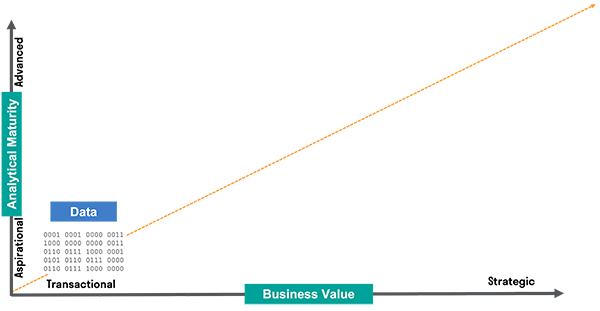
Most B2B companies we talk to have business intelligence (BI) tools, and there are some great ones available. These tools help with assessing ‘what happened?’ and in turn can be used to help forecast the future based on the past. This is an important historical function but hardly the state of the art when it comes to predictive analytical capabilities that inform future actions. It’s the status quo that many settle for without realizing there’s much more value capture on the horizon.
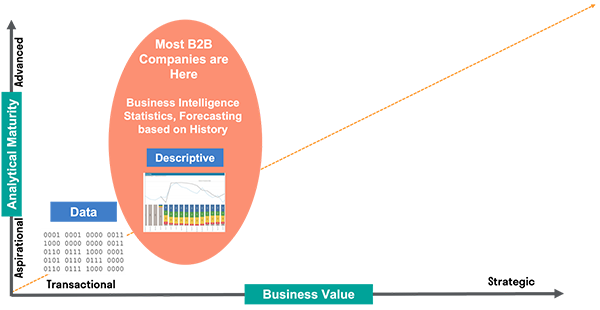
Best practices suggest comparing yourself to the market is always a good idea. Diagnostic analytics inform where you stand and where you can improve based on financial targets and market indicators. The best diagnostic tools allow for benchmarking via your actual data and comparing even specific competitors. They point your business to where you are now and where you want to be. But once again, it’s a retrospective approach at a macro level that can’t take you to the next more granular level: account by account, customer by customer, transaction by transaction. Diagnostics spot the leakage but they don’t plug the hole. Zilliant conducts diagnostic studies on prospective customers’ actual data. And while it’s important to understand the cost of the problem, it’s even more critical to apply a solution. The analogy we make is that this is a very informative and useful analytical exercise. But it is simply analogous to the ‘EKG’ for the business, and not the actual ‘prescription,’ nor ‘pacemaker’ that the heart of the business may need.
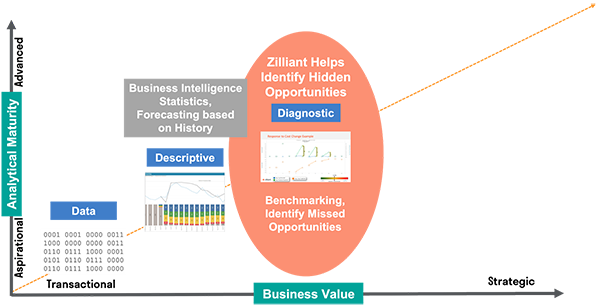
The next mile in capabilities centers on optimizing every interaction at the human touch points using data science (AI and machine learning). In the world of pricing, this could be the start/target/floor price guidance provided to pricing analysts and sellers based on their objectives (more profits, more revenue). It involves capabilities Zilliant has deployed every day for over two decades, such as data-driven segmentation, constraint-based optimization, and simulations that suggest the next best product to sell or what the optimal price is based on elasticity. These capabilities help greatly to achieve optimal outcomes for the business, providing guidance where and when needed, but fall short of translating that guidance into the specific conversations that should take place to maximize the revealed opportunities. They are necessary markers and signposts, but not the actual map of where we want to go.
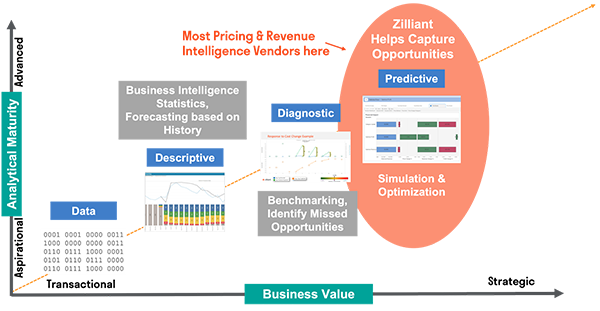
So where is it we want to go? As my Zilliant colleague Barrett Thompson reminds us, “You can’t hope to make any difference to the top-line nor the bottom-line until you connect with the front-line!”
Contextual analytics at the fingertips of those interacting with customers delivers confidence both to sellers and buyers. Specific recommendations, talk tracks, historical context, and specifics of the desired outcomes delivered in the form of contextual analytics will seize the greatest potential for each interaction. Data science is a valued companion in today’s business world, but the context produced by its application is our best friend.
And Zilliant enables that context with prescriptive analytics that empower moments of truth.
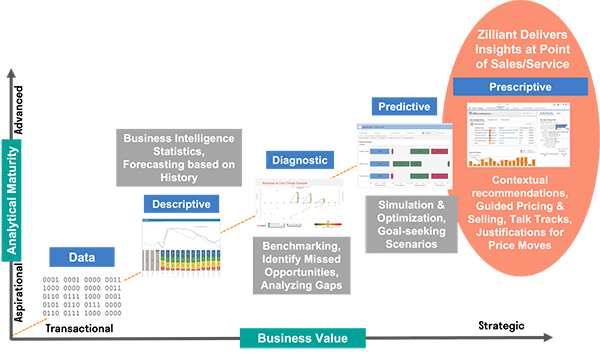
Zilliant uses embedded Tableau visual analytics in our application to give pricing teams, product managers and sellers what they need to maximize opportunities and facilitate productive conversations with their front-line employees and customers. Are you looking ahead but can’t find a path to the summit? Reach out if you are interested in learning more about how Zilliant connects C-Suite goals to front-line conversations and actions.
Connect with me on LinkedIn, send me an email or contact our team. Kyle Nations is Sales Director at Zilliant helping global B2B companies realize improved financial performance using advanced analytical capabilities for optimal pricing & sales effectiveness.
